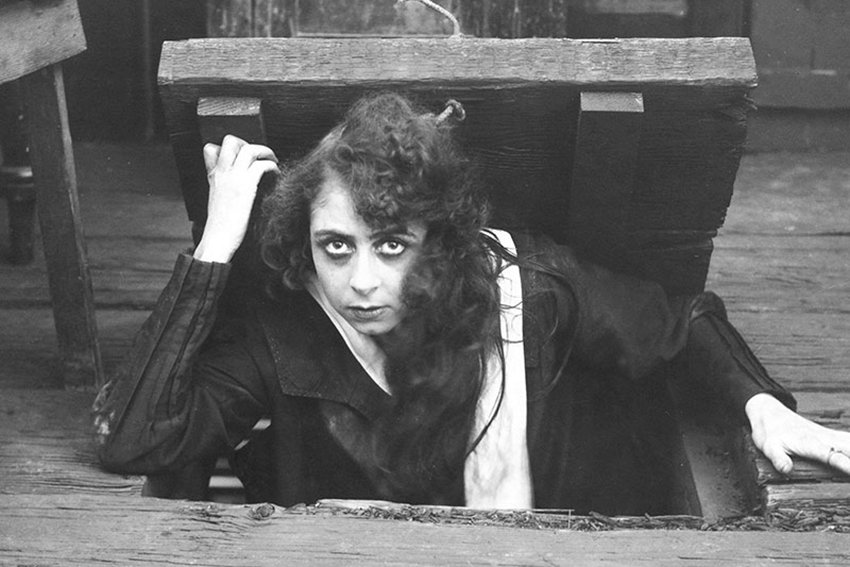Meet Lottie Lyell, forgotten feminist icon of South Australian cinema

One hundred years ago, the proto-feminist silent film The Woman Suffers became South Australia’s first feature film. Now its star Lottie Lyell is being honoured through a new award recognising South Australian women in screen industries. But who was this under-acknowledged pioneer of Australian cinema?
Although Lottie Lyell Cox’s life began and ended in New South Wales, her place in cinematic history is entwined with South Australia’s through her work with the Southern Cross Film Corporation. In 1917 the newly established company lured Lyell and her collaborator, director Raymond Longford, to lead the state’s first feature film The Woman Suffers.
Touching on issues of abuse, suicide and abortion, The Woman Suffers was a brave project for its time with a twisting, inter-generational narrative that wouldn’t sound out of place in an HBO or Showtime schedule today. Lyell starred as a young woman seduced by her long-lost step-brother as an act of revenge, one of many betrayals that form the film’s larger takedown of social inequality on issues of gender and sex; whatever the character or actions of men, it says, the woman suffers.
It nonetheless opened to glowing reviews with thousands turned away from its Adelaide premiere in March 1918. Parochial pride can claim some credit for the film’s ecstatic local reception (filmed on locations including Euchunga, Adelaide and Kooringa, its release was celebrated as the launch of a ‘Photo-play industry’ in the state), but Lyell’s performance received strong praise from audiences around the country despite being banned in her home state. A progressive piece of social commentary for its time, in the age of #MeToo many of its themes still resonate today even if key scenes remain lost.
Both Lyell and Longford’s most enduring success came a year later with the smash hit The Sentimental Bloke. Adapting the seminal work of South Australian writer C.J. Dennis, the pair’s second collaboration with Southern Cross saw Lyell portray Doreen, the object of the titular bloke’s affections. A lovingly comic depiction of working class urbanity, its playful grasp of the format and Australia’s post-war identity spawned sequels, remakes and catapulted Lyell, and the film’s director Raymond Longford to national prominence.
Lyell’s creative and personal partnership with Longford both helped forge and overshadow her own legacy. For years Longford’s status as one of Australia’s great innovators of the silent film era neglected the real impact Lyell made both in front of and behind the camera. Longford was already an established actor when he met a 19-year-old Lyell, and the pair’s subsequent relationship on and off set was remarkable for its time. Already married but unable to divorce, Longford’s relationship with Lyell was apparently an open secret.

And although publicly the star of Longford’s works, in reality her role behind the camera was far more involved, with research suggesting Lyell had a direct hand in writing most of the ‘scenarios’ of The Woman Suffers. She received co-writer credits on 12 of the films they made together, but likely made more uncredited contributions to the 28 films the pair produced in just over a decade (Lyell’s first starring role was in 1911’s The Romantic Story of Margaret Catchpole, performing her own stunts as the horse-stealing convict anti-heroine Catchpole). As one contemporary of Longford wrote, “without question: the Lyell fingerprints are over everything”.
Lyell’s first official director’s credit only came in 1921 with the Blue Mountains Mystery. The film’s Blue Mountains location provides a clue as to why Lyell’s career was cut short. As tuberculosis remained common and essentially incurable in 1920s Australia, higher altitude locations like the Blue Mountains became home to a cottage industry of private convalescence homes. Lyell herself had contracted the illness, which would significantly affect her health, if not her productivity.
A portrait from this time shows Lyell on the set of Blue Mountains Mystery, no longer seizing the attention of the camera with expressive eyes and the dramatic make up typical of the silent movie era. Instead, she looks off into the distance of a shot being composed, clutching a shooting script. Although listening to Longford as he points out some detail, it’s evident that she has her own opinions about the scene.

“I like brains in a woman and she has them,” the film’s star Marjorie Osborne remarked at the time. “Her work on this picture is more on the directing side than the acting. She assists Mr Longford and the two of them have plenty of healthy argument when their ideas about a scene are different.”
Lyell died in 1925 aged 35, and her final film was released a year later. Following her death Longford’s career failed to reach the same heights as the silent era gave way to talkies. Finally granted a divorce just after Lyell’s death, when Longford died his second wife buried him with Lyell – no small gesture.
Recent decades have seen Longford’s legacy, and its debt to Lyell, reassessed, with the Australian Film Institute renaming its Raymond Longford Award the Longford-Lyell in 2014. “Lottie Lyell was a pioneer and a powerhouse, who remains a beacon to female screen practitioners in Australia, particularly in South Australia,” reflects SAFC Chief Executive Courtney Gibson. “The Lottie Lyell Award will enable a female SA screen creative with a bold and ambitious project to make her mark and go next-level.”
With the inaugural Lottie Lyell Award recipient (entries open now) to be announced as part of this year’s Adelaide Film Festival, we have another opportunity to better appreciate Lyell’s contribution to Australia on the screen.
Main image: Lottie Lyell in The Church and the Woman, 1917 via National Film and Sound Archive